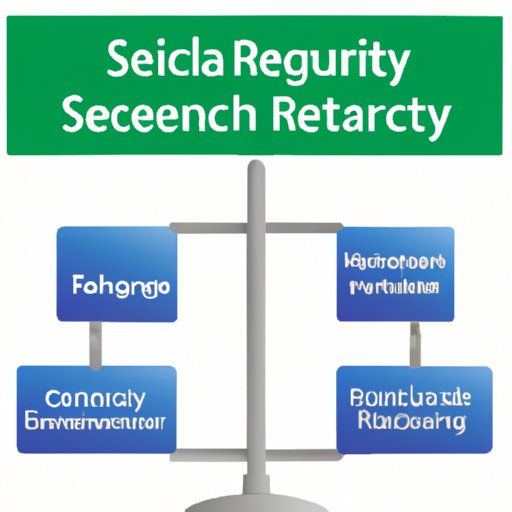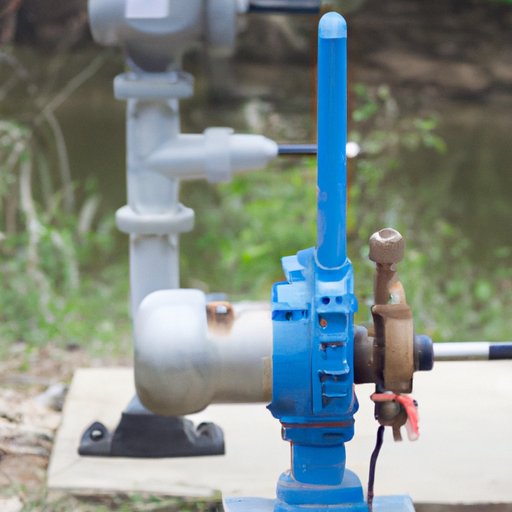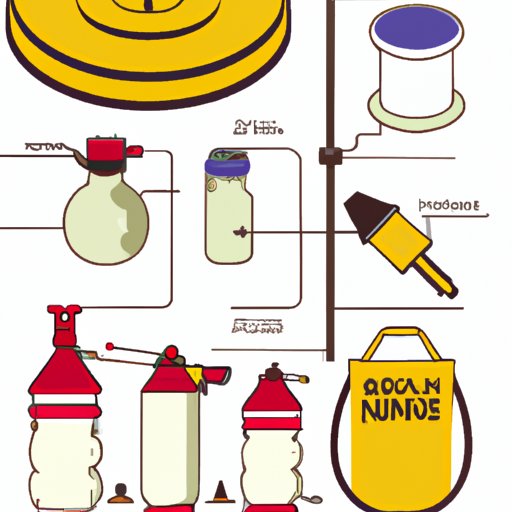Introduction
A well is an underground structure that is used to draw water from the ground. Wells are often used as a source of drinking water for homes and businesses, so it is important to ensure that they are properly maintained and cleaned regularly. Cleaning a well can be a complicated process, but following the proper steps will help ensure that the job is done correctly and safely.
It is important to understand why a well should be cleaned. If a well is not properly maintained, it can become contaminated with bacteria or other contaminants that can make people sick. Properly cleaning a well can help prevent this from happening and ensure that the water is safe to drink.

Research Safety Regulations and Precautions
Before beginning the process of cleaning a well, it is important to research any local regulations or safety precautions that may apply. In some areas, there may be specific laws or regulations that must be followed when cleaning a well. It is also important to understand any potential risks associated with the process, such as the risk of contamination or exposure to harmful gases.
It is also important to contact a licensed professional if you have any questions or concerns about cleaning a well. An experienced professional can provide valuable advice and assistance throughout the process.
Invest in Appropriate Supplies and Tools
The next step in cleaning a well is to invest in the necessary supplies and tools. This includes items such as a submersible pump, brushes, and disinfectants. It is important to purchase supplies and tools that are specifically designed for use in wells, as these products are designed to be safe and effective.
When purchasing supplies and tools, it is important to shop around to find the best prices and selection. Many hardware stores and online retailers offer a wide selection of products designed for use in wells.

Shut off Power to the Well Pump
Before beginning the process of cleaning a well, it is important to shut off the power to the well pump. This can usually be done by locating the power switch and flipping it off. It is important to take all necessary safety precautions when shutting off the power, such as wearing protective gloves and face masks, in order to avoid electric shock.
Lower a Submersible Pump
Once the power has been shut off, the next step is to lower a submersible pump into the well. A submersible pump is a device that is designed to be lowered into a body of water and used to remove water and debris from the bottom of the well. The submersible pump should be lowered slowly and carefully to avoid damaging the well.
Once the submersible pump is in place, it can be used to remove water and debris from the bottom of the well. It is important to monitor the submersible pump throughout the process to ensure that it is working properly.
Clean the Well Walls
Once the water and debris have been removed from the bottom of the well, it is important to clean the walls of the well. This can be done using a brush and a disinfectant. It is important to scrub the walls thoroughly to remove any dirt or debris that may have accumulated over time.
Once the walls are clean, it is important to rinse them off with clean water to remove any remaining debris or disinfectant. After the walls have been rinsed, it is important to allow them to dry completely before moving on to the next step.
Inspect the Well Cap, Seal, and Casing
Once the walls of the well have been cleaned, it is important to inspect the well cap, seal, and casing for any damage or wear. It is important to look for cracks, holes, or other signs of damage that could potentially lead to contamination. If any damage is found, it is important to repair or replace the components before proceeding.
Disinfect the Well
After the well cap, seal, and casing have been inspected, it is important to disinfect the well. This can be done using chlorine or other approved chemicals. It is important to follow the instructions on the product’s label to ensure that the well is adequately disinfected.
Once the well has been disinfected, it is important to allow the chemical to sit for the recommended amount of time before flushing the well with clean water. This will help ensure that any remaining chemicals are removed from the well.
Conclusion
Cleaning a well can be a complicated process, but following the proper steps will help ensure that the job is done correctly and safely. Researching safety regulations and precautions, investing in the necessary supplies and tools, shutting off power to the well pump, lowering a submersible pump, cleaning the well walls, inspecting the well cap, seal, and casing, and disinfecting the well are all important steps in the process. Remember to always follow all safety regulations and precautions when cleaning a well.
(Note: Is this article not meeting your expectations? Do you have knowledge or insights to share? Unlock new opportunities and expand your reach by joining our authors team. Click Registration to join us and share your expertise with our readers.)
